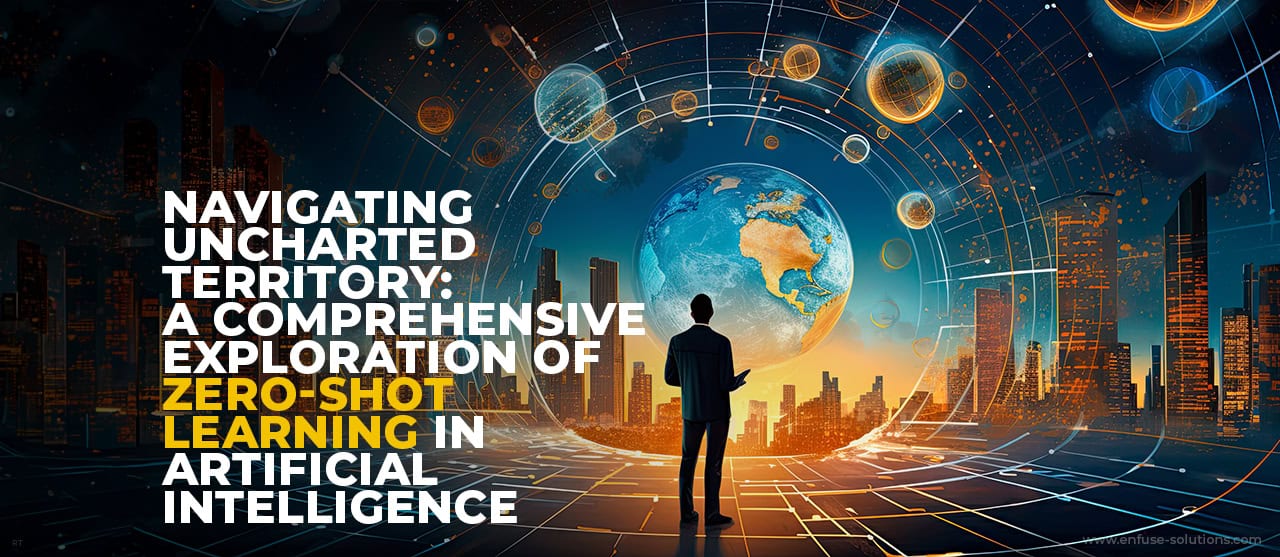
In the dynamic landscape of artificial intelligence (AI) and machine learning (ML), Zero-Shot Learning (ZSL) emerges as a revolutionary subfield that redefines the boundaries of machine comprehension. This cutting-edge approach empowers machines to recognize and interpret objects, concepts, or events that lie beyond their prior training data.
As a form of transfer learning, ZSL facilitates the generalization of machine learning models across diverse domains, tasks, and contexts, paving the way for enhanced adaptability and versatility.
Understanding The Essence Of Zero-Shot Learning
At the core of ZSL is the profound ability to decipher relationships between different concepts and engage in reasoning based on semantic properties. Unlike traditional learning models that establish direct associations between specific inputs and predetermined outputs, ZSL algorithms embark on a journey of abstraction.
These algorithms learn to map inputs to a space of attributes or features that encapsulate the intrinsic semantics of the data. This distinctive approach empowers the model to recognize and categorize new classes or concepts by assessing their similarity to previously assimilated attributes.
Illustrative Applications Of Zero-Shot Learning
The versatility of ZSL becomes evident in various real-world scenarios, showcasing its potential applications:
1. Species Recognition In Ornithology
ZSL facilitates the identification of a novel bird species based on its physical characteristics, even when the model has not encountered that specific bird during its training phase. This application holds tremendous promise for ornithologists seeking efficient and accurate species classification.
2. Multilingual Sentiment Analysis
The ability to identify the sentiment of text in languages that the model has not been explicitly trained on demonstrates the cross-linguistic potential of ZSL. This is particularly valuable in a globalized world where diverse languages coexist.
3. Image Classification Beyond Training Data
ZSL excels in classifying images based on content, even when the model has not been exposed to those specific images during its training. This capability holds significant implications for scenarios where new, unseen data constantly emerges.
The Advantages Of Zero-Shot Learning
One of the key advantages of ZSL lies in its potential to significantly reduce the amount of labeled data required for training machine learning models. Traditional approaches heavily rely on large, annotated datasets to teach models how to recognize specific objects or concepts. In contrast, ZSL empowers models to learn from a more modest set of labeled data and then generalize their knowledge to new and unexplored contexts and domains.
The Techniques Underpinning Zero-Shot Learning
To achieve its transformative outcomes, ZSL employs a sophisticated arsenal of techniques, including semantic embeddings, knowledge graphs, and transfer learning.
1. Semantic Embeddings
Semantic embeddings involve the representation of data in a high-dimensional space, capturing nuanced semantics that underlie the data. By embedding semantic information into the model, ZSL enhances its ability to understand the intricate relationships between concepts.
2. Knowledge Graphs
Knowledge graphs provide structured representations of concepts and their relationships. In the context of ZSL, these graphs become a powerful tool for reasoning about new concepts. The structured nature of knowledge graphs enables machines to navigate and infer relationships, contributing to the robustness of ZSL models.
3. Transfer Learning
An integral component of ZSL, transfer learning involves leveraging pre-trained models to extract features from new and unseen data. This process enables models to build on existing knowledge, adapting and enhancing their understanding of novel concepts.
The Role Of Data Tagging In Zero-Shot Learning
Data tagging emerges as a cornerstone in the success of ZSL, allowing models to comprehend relationships between diverse concepts and engage in reasoning based on semantic properties. Various types of data tagging play pivotal roles in this process:
1. Entity Tagging
Identifying specific entities within the text, such as people, places, or organizations, is crucial for ZSL models to understand the context and relationships between different elements.
2. Sentiment Tagging
Determining the sentiment of text, whether positive, negative, or neutral, contributes to the nuanced understanding of textual data. This type of tagging enhances the model’s ability to discern the emotional tone in diverse contexts.
3. Topic Tagging
Identifying the topic or subject of a text, such as sports, politics, or entertainment, aids in contextualizing information. ZSL models can leverage this tagging to navigate diverse domains and make informed predictions.
4. Image Tagging
Recognizing objects, people, or events within an image is a fundamental aspect of ZSL. Image tagging enables models to associate visual elements with underlying semantic concepts.
5. Audio Tagging
Identifying sounds or speech within an audio clip is crucial for ZSL applications involving audio data. Audio tagging enables models to process and understand auditory information.
Tools And Platforms Facilitating Data Tagging
Several tools and platforms have emerged to streamline the data tagging process, making it more accessible for practitioners and developers:
1. Amazon Mechanical Turk
A crowdsourcing platform that enables users to create and manage tasks, including data tagging tasks. Mechanical Turk facilitates the efficient labeling of large datasets through distributed human intelligence.
2. Google Cloud AutoML
A suite of machine learning tools that includes a data labeling service for image, text, and video data. Google Cloud AutoML simplifies the process of annotating diverse data types, enhancing the efficiency of ZSL model training.
3. Hugging Face Datasets
A collection of pre-built datasets for natural language processing (NLP) tasks, including entity recognition and sentiment analysis. Hugging Face Datasets provides a resourceful repository for practitioners seeking labeled data for ZSL applications in NLP.
4. Labelbox
A data labeling platform that allows users to create and manage labeling tasks for images, videos, and text data. Labelbox offers a versatile solution for annotating diverse datasets, supporting ZSL applications across various domains.
5. Tagtog
A collaborative data annotation tool that supports multiple types of data, including text, image, and audio data. Tagtog facilitates collaborative tagging efforts, enhancing the accuracy and comprehensiveness of labeled datasets for ZSL.
Conclusion
In conclusion, Zero-Shot Learning emerges as a powerful and transformative technique, enabling machines to recognize and comprehend objects, concepts, or events that lie beyond their prior training data. Anchored in sophisticated techniques such as semantic embeddings, knowledge graphs, and transfer learning, ZSL stands as a testament to the evolving landscape of AI and ML.
The intrinsic advantage of ZSL lies in its ability to minimize the reliance on extensive labeled datasets, offering a more efficient and adaptable approach to model training. Data tagging, encompassing various forms such as entity tagging, sentiment tagging, topic tagging, image tagging, and audio tagging, plays a pivotal role in enhancing the model’s ability to generalize and recognize novel concepts.
The availability of diverse tools and platforms, including Amazon Mechanical Turk, Google Cloud AutoML, Hugging Face Datasets, Labelbox, and Tagtog, further facilitates the data tagging process, making ZSL more accessible than ever.
As ZSL continues to unfold its capabilities, it stands as a beacon of innovation in the realm of machine learning. The journey into uncharted territories becomes not only possible but promising, as ZSL opens avenues for machines to navigate, understand, and adapt to the ever-expanding landscape of data-driven challenges.
Having accurate and reliable data is crucial when it comes to the performance of AI models. Even the slightest errors in the data can have a significant impact on how these models function. That’s why EnFuse Solutions takes great care to provide custom AI training datasets, offering support for over 300 languages.

















Comment